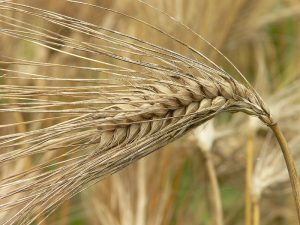
Two recent papers underscore the importance of using PacBio full-length RNA sequencing to interrogate transcriptomes for major crops. Together, these publications offer compelling evidence that information considered essential for crop improvement programs is too often missed by short-read sequencers.
A team of scientists from the Earlham Institute and other institutions report the assembly and annotation for wheat, an allohexaploid genome. From lead authors Bernardo Clavijo and Luca Venturini, senior author Matthew Clark, and collaborators, “An improved assembly and annotation of the allohexaploid wheat genome identifies complete families of agronomic genes and provides genomic evidence for chromosomal translocations” came out in Genome Research.
For this project, scientists used the Iso-Seq method of generating SMRT Sequencing data for full-length transcript isoforms using six tissue types. The results allowed the team to discover thousands of genes missed in a previous annotation and corrected thousands more existing gene models. With a much-improved annotation, the scientists were able to identify a set of disease-resistance genes, gluten protein genes that are important for baking quality, and genes associated with useful traits such as plant height and grain yield. Together with the genome assembly they produced, the team reports these are “powerful resources for trait analysis and breeding of this key global crop.”
Separately, “A chromosome conformation capture ordered sequence of the barley genome” was published in Nature by lead author Martin Mascher and senior author Nils Stein from the Leibniz Institute of Plant Genetics and Crop Plant Research and collaborators. They used Iso-Seq data as part of the annotation effort for their new barley reference genome assembly, resulting in about 40,000 high-confidence genes from a total of 16 different tissues. The scientists note that SMRT Sequencing was used to generate full-length transcript data “to support gene calling in general, and the identification of alternative splice forms in particular.” Their analysis of gene families led to finding “lineage-specific duplications of genes involved in the transport of nutrients to developing seeds and the mobilization of carbohydrates in grains.”
Learn more about using the Iso-Seq method for plant and animal genome annotation and alternative splicing identification.
June 27, 2017 | General